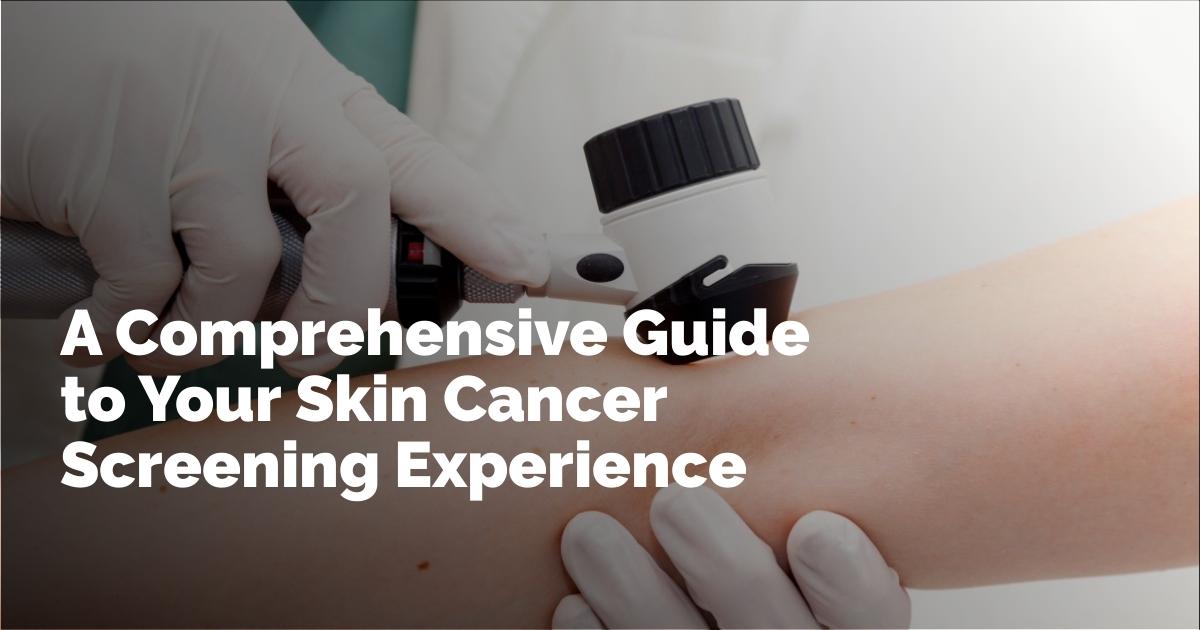What to Expect at a Skin Cancer Screening and How to Protect Your Skin
Your skin is undeniably the largest organ of your body, yet it often doesn't receive the attention it deserves, particularly concerning regular cancer screenings. According to Dr. Susan Massick, an associate professor of dermatology at The Ohio State University Wexner Medical Center, undergoing a skin cancer screening exam should be an essential part of our health routine. These exams are straightforward, painless, and require no prior preparation, bloodwork, or imaging studies. Moreover, they provide immense peace of mind as they help you proactively safeguard your skin health against cancer. Let's delve into what dermatologists suggest you should know about skin cancer screenings.
Who Should Get a Skin Cancer Screening?
Determining who needs a skin cancer screening involves understanding the risk factors and recommendations from leading health organizations. In 2023, the United States Preventative Services Task Force (USPSTF), consisting of national experts in disease prevention and evidence-based medicine, suggested that asymptomatic, low-risk adolescents and adults might not need annual skin exams. Instead, organizations like the American Academy of Dermatology Association recommend regular self-exams and consulting a dermatologist if any changes are observed.
For those at higher risk—individuals with a personal or family history of skin cancer, numerous moles, atypical nevi, or a history of significant sun exposure—annual professional screenings are advisable. Dr. Shoshana Marmon from New York Medical College emphasizes that these groups should have yearly skin checks. For children, screenings are generally unnecessary unless there's a family history of melanoma or noteworthy changes in moles. Parents are encouraged to monitor their children's skin, specifically if they have fair skin, freckles, or are prone to sunburns.
Key risk elements include:
- A personal or family history of skin cancer
- Numerous or atypical moles
- Previous chronic or intense sun exposure, frequent sunburns, or tanning bed usage
- Changing skin lesions or symptomatic skin lesions that are itchy, painful, or non-healing
- Fair skin, light-colored eyes, or hair, and skin that burns easily
Many individuals find themselves within these categories, yet numerous people skip these crucial checks. People with significant sun damage might need more frequent exams than an annual visit. Typically, patients with a history of non-melanoma skin cancer would be checked every six months, whereas those with a history of melanoma might need to be examined every three months for the first two years and subsequently every six months.
It is vital to note that age should not deter anyone from seeking a professional examination. Early detection can be life-saving, transforming what might be a serious condition into something manageable. Moreover, everyone should conduct regular self-screening skin checks.
What to Expect at the Skin Cancer Screening Exam
Once you arrive at the clinic for your skin cancer check, several straightforward steps are typically followed. Firstly, you will be escorted to a private exam room where initial paperwork covering your general and skin-specific medical history will be completed. This includes questions regarding your personal and family history of skin cancer, history of sun exposure, and any new areas of skin concern.
During the exam, the dermatologist aims to inspect your skin comprehensively from head to toe because skin cancer is not limited to sun-exposed areas. Patients change into a gown to enable the dermatologist to have a complete view of the skin. Feel free to request a chaperone if that makes you more comfortable.
The dermatologist thoroughly examines obvious areas such as the face, body, and extremities, but they also check less apparent areas like the scalp, behind the ears, between your fingers and toes, and under your fingernails and toenails. The procedure is entirely painless. For more precise visualization, a magnifying tool like a dermatoscope may be employed. If a potentially concerning lesion is noted, a skin biopsy might be recommended. Local numbing anesthetic ensures this procedure is also pain-free.
What Happens After the Exam?
After the inspection, the dermatologist generally provides immediate feedback. If any concerning spots are found, they might recommend a biopsy, which can often be performed promptly or scheduled for a later date. Occasionally, they might suggest monitoring a specific lesion with a follow-up check in about three months.
Biopsy results typically take about one to two weeks. Should any urgent concerns arise, the biopsy may be expedited for faster results. If the exam reveals no issues, the dermatologist will advise on self-monitoring techniques and recommend when your next professional screening should occur. It’s reassuring to know that most skin cancers, when detected early, are localized and highly treatable.
How to Do an At-home Skin Self-Exam
Self-exams are critical in spotting skin changes early. Dr. Massick suggests that adults conduct a monthly self-exam in a well-lit room using both a large wall mirror and a smaller handheld one.
- Closely examine your skin from the front, including your face, neck, chest, arms, and legs.
- Use the mirror to check the backs of your arms and your armpit area by rotating and raising them.
- Turn around and use the handheld mirror to view the back of your neck, back, buttocks, and legs. For areas like the groin and feet, you might need to sit.
- Taking full-body photographs over time can help track mole changes.
How to Prevent Skin Cancer
Prevention is vital to maintaining healthy skin. "There is no such thing as a healthy tan," notes Dr. Massick, emphasizing the importance of protecting your skin from UV exposure, whether from natural sunlight or tanning beds. Consistent use of sunscreen can significantly lower your skin cancer risk and prevent photodamage, which causes skin aging and wrinkles.
Here are other strategies to reduce UV exposure:
- Avoid sun exposure, especially between the peak hours of 10 a.m. and 3 p.m.
- Apply sunscreen daily, reapplying every two to three hours if spending extended time outdoors.
- Use SPF 25+ for daily wear and SPF 50+ for more intense sun exposure.
- Opt for mineral sunscreens with titanium dioxide and zinc oxide, which are effective sun blockers and environmentally friendly.
- Utilize the shade when possible.
- Wear sun-protective clothing and UV protective sunglasses.
- Maintain a healthy lifestyle, including a balanced diet, regular exercise, and adequate hydration.
Incorporating these preventative measures into your lifestyle will help protect your skin and reduce your risk of developing skin cancer.
출처 : Original Source

